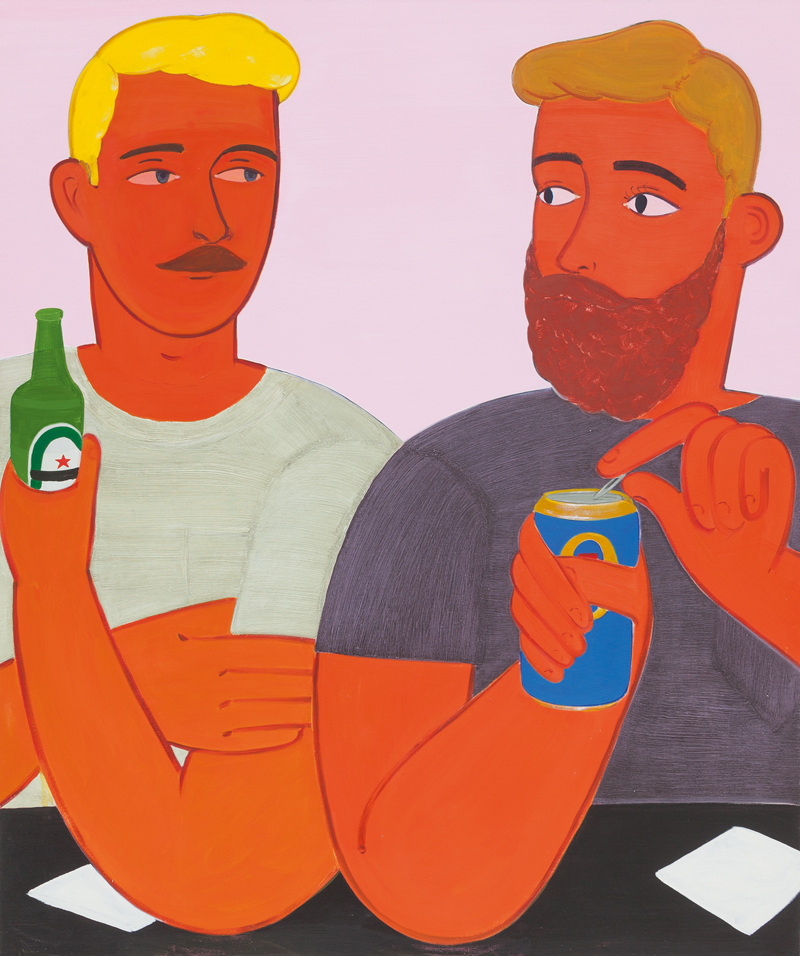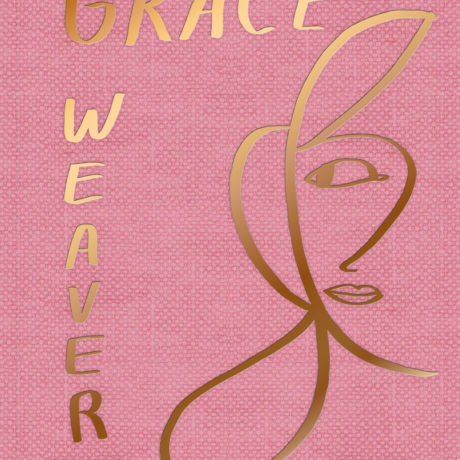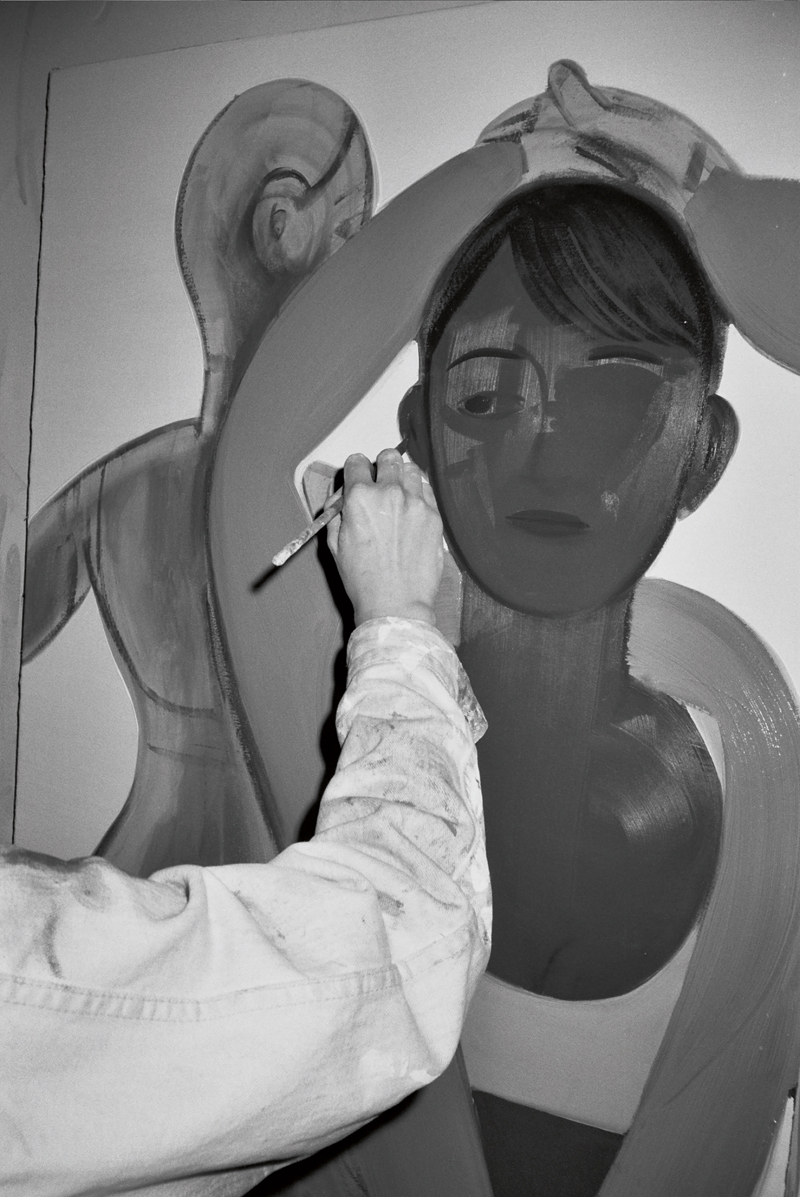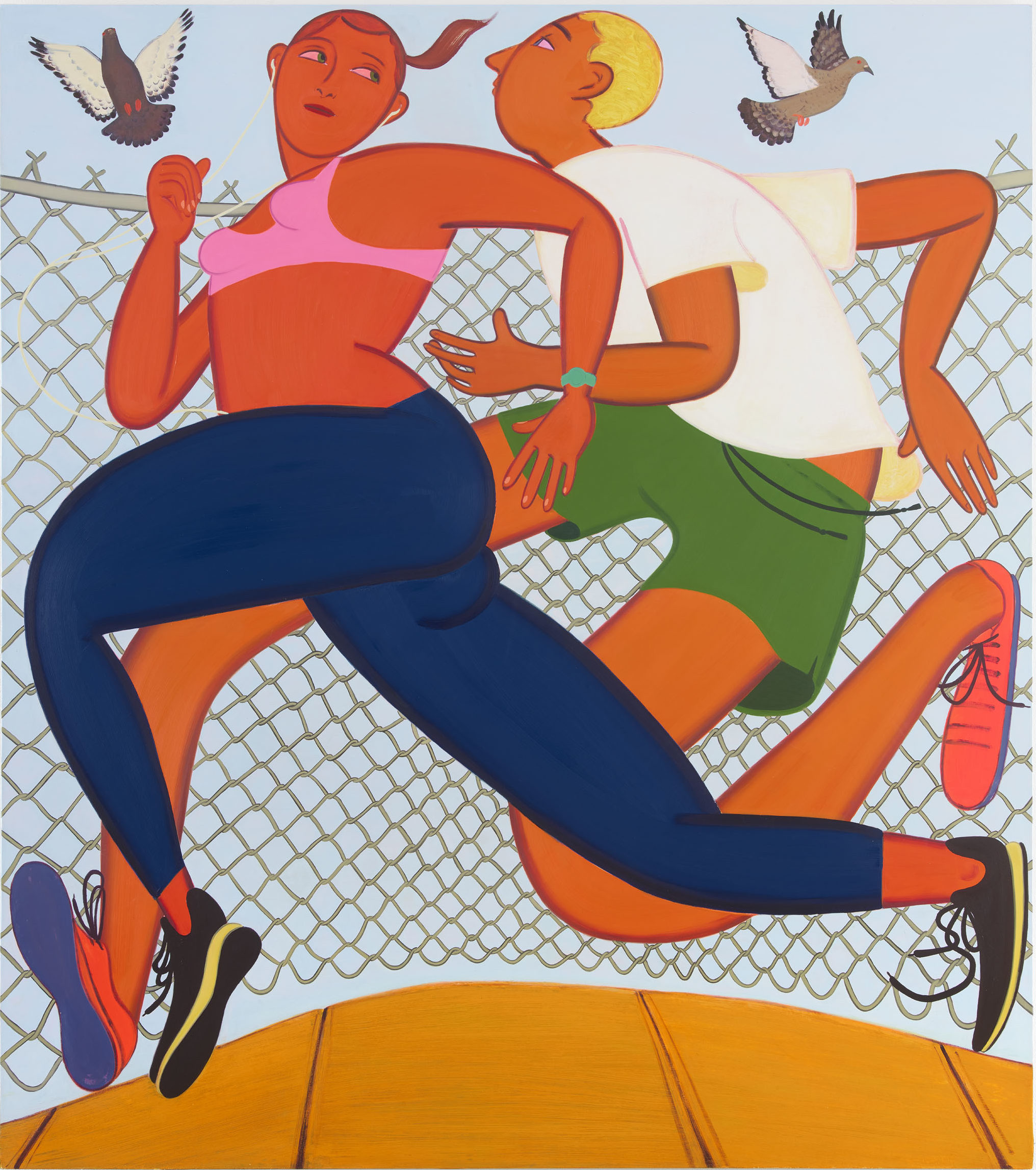
It is no secret that nowadays most of us encounter new forms of visual culture through a screen. Paintings, videos and photographs are cropped, compressed and manipulated to fit a variety of devices, rendering a homogenous digital flatness that removes any inherent sense of depth or proportion.
You are made starkly aware of this fact in the opening pages of Grace Weaver’s new monograph, where black-and-white snapshots reveal the artist grappling with enormous canvases and painting on an epic scale. I have never seen Weaver’s work in the flesh, and to my shame I had given little thought to the dimensions of her luscious, hyper-pigmented paintings. What first appear to be succinct compositions, perfectly poised for Instagram grids, are often mammoth works that tower over the viewer, created with the aid of contraptions including several paint brushes bolted to a plank of wood.
- Grace Weaver in her studio
This book not only contextualises the studio environment and surprising scale of Weaver’s paintings, but also her preparatory process. Sweeping charcoal lines complete with rubbings and smudges give insight into how she conceives movement while revelling in a strange static sensibility, where raindrops, runners’ limbs and windswept hair appear frozen in time.
“Weaver uses surreal foreshortening informed by Mannerism to create scenes that engulf us, practically pulling us into the picture.”
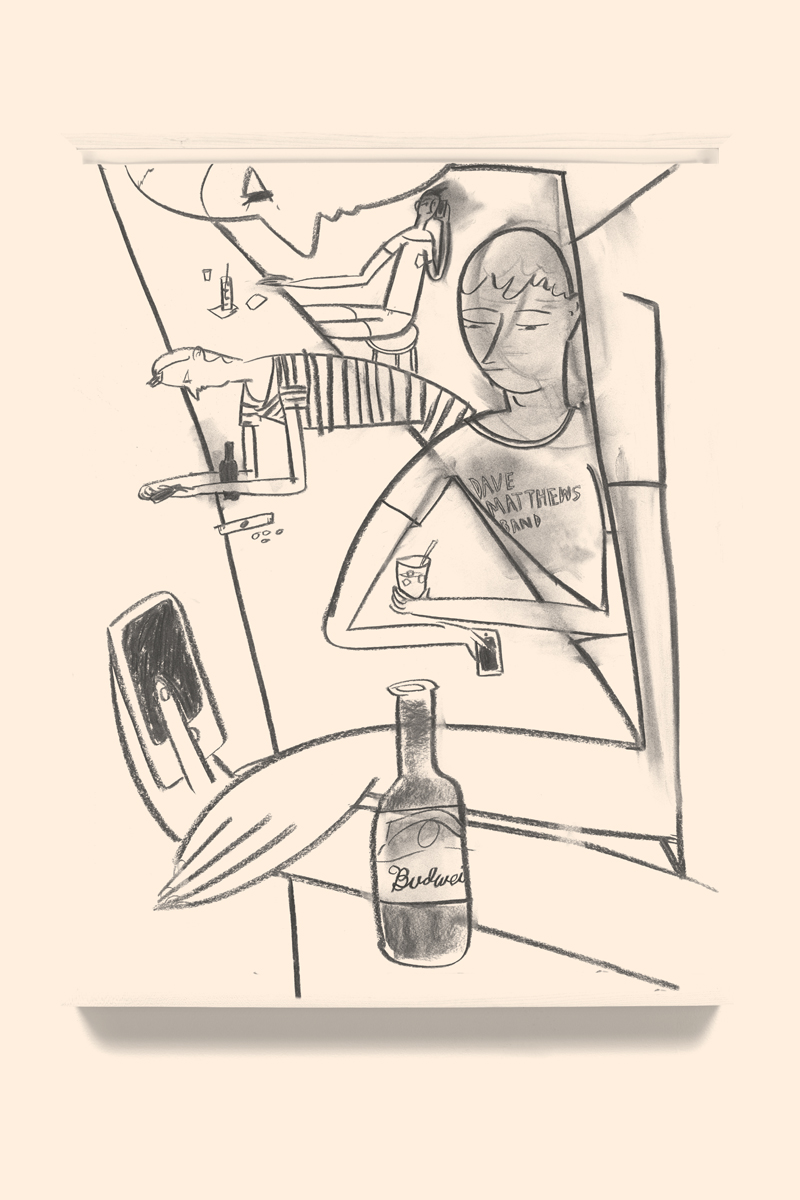
These sketches appear nestled within a larger survey of the glorious full-colour paintings that follow. Weaver uses surreal foreshortening informed by Mannerism to create scenes that engulf us, practically pulling us into the picture. Groups of friends meet for drinks, partake in exercise or connect in twisted embraces that seem prophetic of our new era of tentative physical distancing.
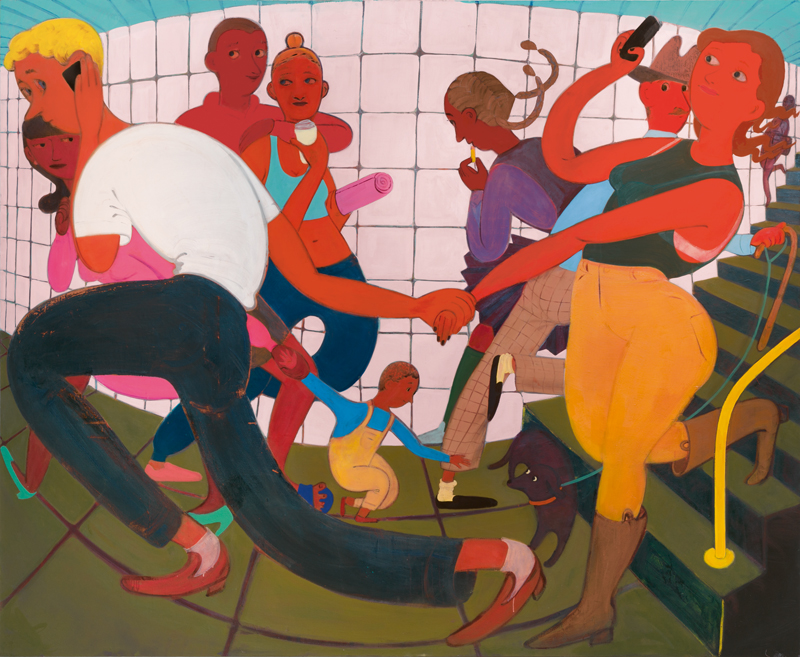
She employs heavy shadows to intensify theatrical allusions and utilizes a palette that Mitch Speed refers to (in his accompanying essay) as having its own personality. He singles out hues such as “warm violet”, “magma red” and “phthalo green” to draw similarities between the visual narratives that Weaver has constructed, suggesting that they create a “polyphonic chorus”, where everything appears harmonious despite incongruities with our own visible reality.
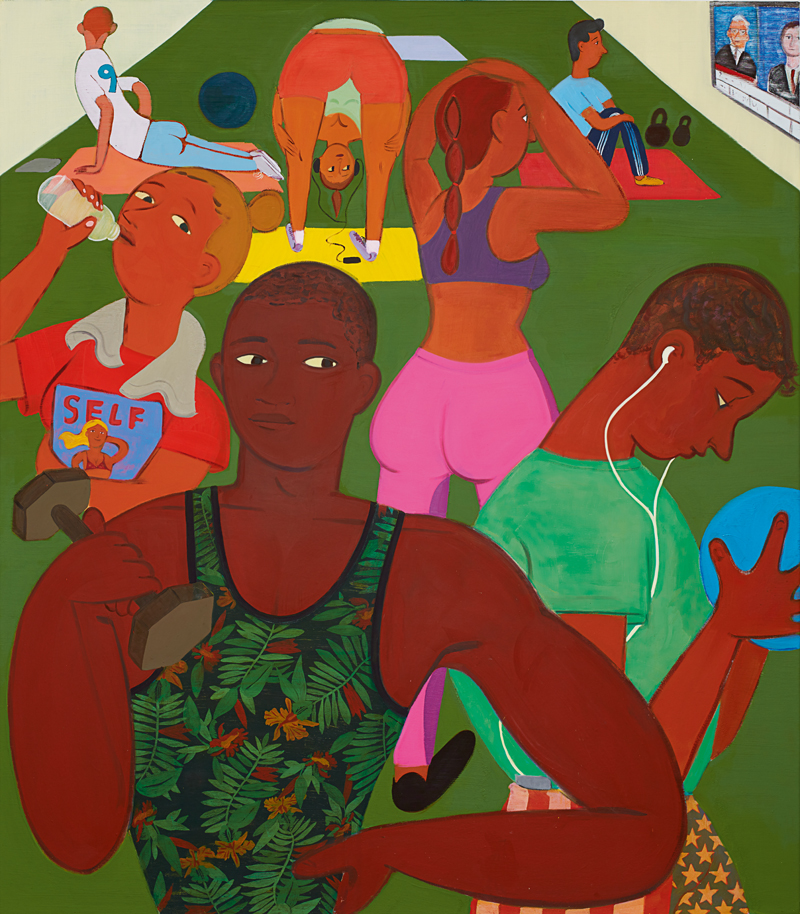
There is certainly something joyous and comforting about Weaver’s work. Her fluid lines and curvaceous figures are occasionally reminiscent of traditional hand-rendered animation cels, where the magical, slippery effects of motion have yet to be employed. Elsewhere, her figures offer furtive glances or deeply connected gazes that speak to the various social situations we find often ourselves navigating (at least until recently).
Along with her alluring palette, her combinations of crisp lines and bold blocks of colour—which give way to softer nuance on closer inspection—invite you to revel in the physicality of painting, as much as the stories her images tell.
